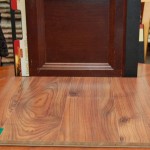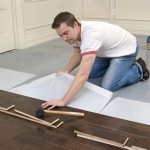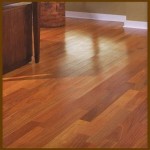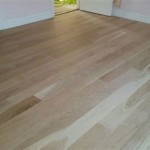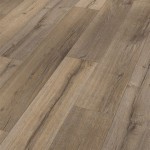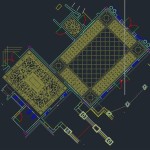Can You Lay Wood Flooring on Concrete? Exploring the Essential Considerations
Laying wood flooring on concrete poses unique challenges and requires careful consideration of various factors. This comprehensive guide delves into the essential aspects of this process, providing you with the necessary knowledge to make an informed decision and ensure a successful installation.
1. Moisture Concerns: The Key Factor
Concrete is naturally porous and can absorb moisture, which can be detrimental to wood flooring. If the concrete subfloor is not adequately dry, it can cause the flooring to warp, buckle, or rot over time. Therefore, it is crucial to measure the moisture content of the concrete before installing wood flooring. The ideal moisture level should be below 12%, and a vapor barrier should be installed to prevent moisture transmission.
2. Flatness and Leveling: A Smooth Foundation
The concrete subfloor must be flat and level to ensure proper installation of the wood flooring. Any unevenness or dips can create gaps or cause the flooring to settle unevenly, compromising its stability and aesthetics. If the subfloor is not within acceptable tolerances, it may require grinding or leveling to achieve a smooth and even surface.
3. Insulation and Underlayment: Comfort and Protection
Insulation and underlayment play a vital role in enhancing the comfort and longevity of wood flooring installed on concrete. Insulation, such as foam or cork, provides a thermal barrier, reducing heat loss and making the floor more comfortable to walk on. Underlayment, placed over the insulation, absorbs sound, reduces impact noise, and provides a smooth, even base for the wood flooring.
4. Expansion and Contraction: Allowing for Natural Movement
Wood flooring naturally expands and contracts with changes in temperature and humidity. To accommodate this movement, it is essential to leave an expansion gap around the perimeter of the room. This gap should be approximately 1/4 inch to 1/2 inch and will allow the flooring to expand and contract without buckling or warping.
5. Adhesive and Installation Methods: Bonding and Stability
The adhesive used to install wood flooring on concrete must be specifically designed for this purpose. It should be strong enough to provide a secure bond between the flooring and the subfloor while allowing for some flexibility to accommodate the natural movement of the wood. There are two primary installation methods: floating floor, where the flooring planks are locked together and not adhered to the subfloor, or glued-down, where the flooring is permanently bonded to the concrete.
By understanding these essential considerations, you can approach the process of laying wood flooring on concrete with confidence. Proper preparation, attention to moisture control, and professional installation techniques will ensure a successful and durable wood flooring installation that enhances the beauty and value of your home.

Installing Wood Flooring Over Concrete Diy

Installing Hardwood Floors On Concrete Subfloors
Can A Concrete Floor Be Replaced With Wood Quora

How To Install Solid Wood Flooring On Concrete And Oak Specialists Suppliers Nexus

How Do I Install A Hardwood Floor On Concrete Slab The Carpet Guys

How To Install A Wood Subfloor Over Concrete Rona

How To Lay Solid Wood Flooring Over Concrete

How To Install Wood Floors On Concrete Quora

Installing Engineered Hardwood On Concrete Twenty Oak

Fitting Hardwood Floor To Concrete Wood And Beyond Blog
Related Posts

